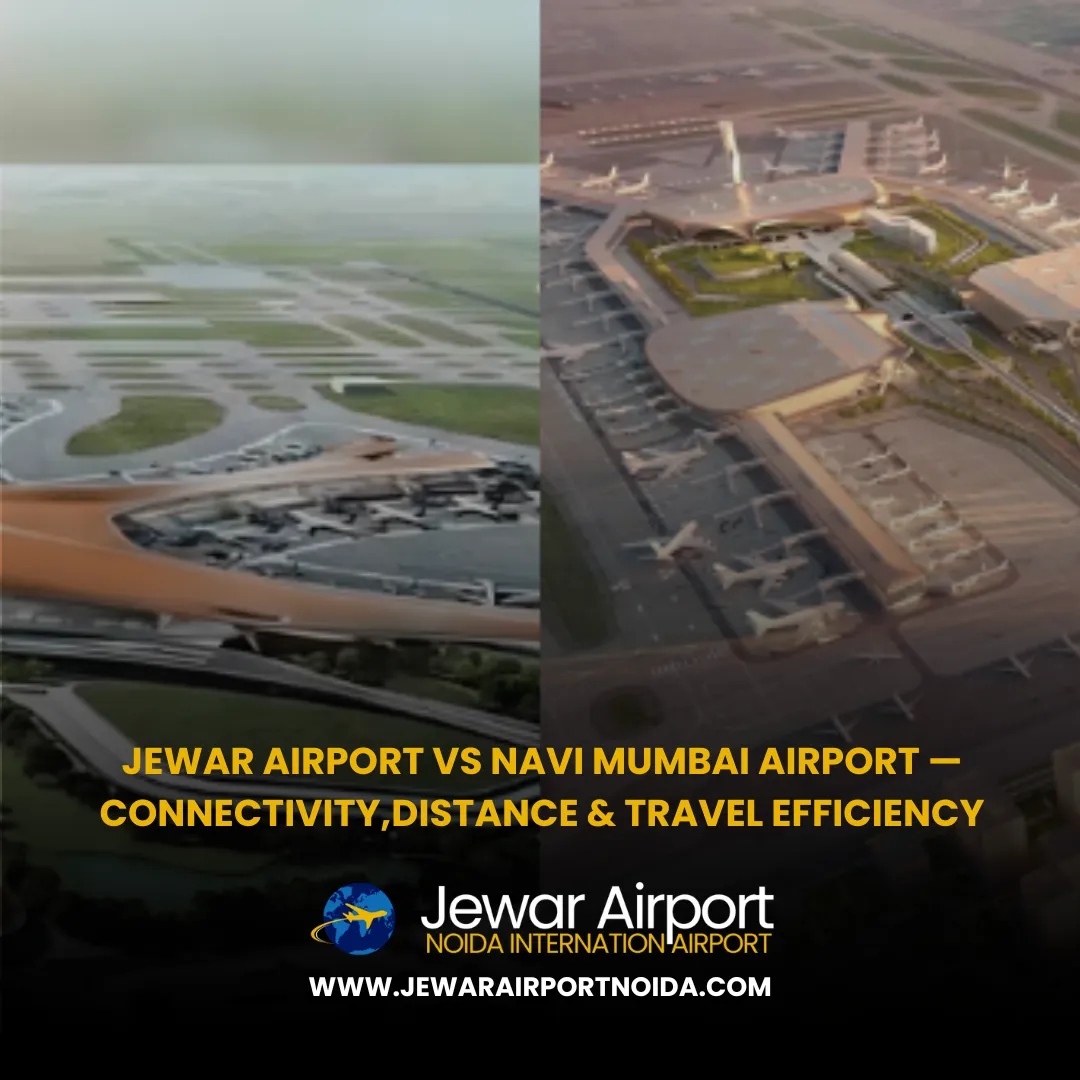Navi Mumbai International Airport: A Game-Changer for Real Estate in Panvel and Beyond
The soon-to-be-inaugurated Navi Mumbai International Airport (NMIA), officially named D. B. Patil International Airport, is not just a transportation megaproject — it’s an economic catalyst that’s already reshaping the real estate dynamics in Navi Mumbai, particularly Panvel, Ulwe, Khargar, Kamothe, and Taloja.
Set to open in June 2025, the airport is being developed in three phases, with a projected handling capacity of 90 million passengers and 2.5 million tonnes of cargo annually once fully operational. As per real estate platforms like Magicbricks, this massive infrastructure development is expected to elevate Panvel from a suburban node to a thriving residential and commercial zone.

Quick Summary: NMIA’s Real Estate Impact
| Parameter | Impact |
|---|---|
| 📍 Airport Location | Navi Mumbai, near Panvel |
| ✈ Opening Date | June 2025 (Phase 1) |
| 🧱 Real Estate Growth Areas | Panvel, Ulwe, Khargar, Kamothe, Taloja |
| 💰 Price Appreciation Forecast | 10–15% in 3–5 years |
| 🏙️ Commercial Growth | Office hubs, logistics, retail parks |
| 🏘️ Residential Boom | Affordable & mid-segment housing |
| 🚀 Long-Term Impact | Emergence of Mumbai’s second aerotropolis |
Real Estate Boom Around Navi Mumbai Airport: Key Impact Areas
1. Panvel: From Transit Town to Property Hotspot
Once known primarily as a gateway to Konkan, Panvel is fast emerging as a focal point for new residential and commercial projects. Thanks to:
- Proximity to NMIA (just ~10 km)
- Ongoing highway expansions and rail network upgrades
- Rapidly improving civic infrastructure (metro, sewage, roads)
Property developers such as Hiranandani, Godrej, Wadhwa, Marathon, and Arihant are actively acquiring land parcels here.
📈 Expected Price Appreciation:
Residential and commercial property rates in Panvel may rise by 15% to 20% over the next 3–5 years.
2. Commercial and Office Space Demand Will Surge
The airport will unlock the potential for Panvel and Ulwe to become alternative commercial zones to BKC and Vashi. Key drivers:
- Warehousing, logistics, and freight forwarding facilities
- IT and fintech start-up hubs near the airport
- Retail space demand in Ulwe and Khargar
The rise of airport-driven commercial ecosystems is already evident in Delhi (Aerocity) and Hyderabad (GMR AeroCity), and similar trends are expected in Navi Mumbai.
3. Residential Demand Across All Segments
The real estate market in Panvel and nearby nodes is poised to witness:
- Affordable housing boom (1BHK & 2BHK)
- Growth in mid-segment gated communities
- Long-term demand for luxury and rental properties by airport professionals and MNC employees
Developers are betting on migrating professionals, airport staff, and aviation-linked industries to drive sustained housing demand.
4. Neighbourhoods That Will Benefit the Most
| Area | Type | Growth Potential |
|---|---|---|
| Panvel | Residential & Commercial | ⭐⭐⭐⭐ |
| Ulwe | Residential & Rental Demand | ⭐⭐⭐⭐ |
| Kamothe | Affordable Housing | ⭐⭐⭐ |
| Khargar | Mid-Segment Residential | ⭐⭐⭐⭐ |
| Taloja | Industrial + Affordable Sector | ⭐⭐⭐ |
Startups and MNCs Eye Business-Friendly Infrastructure
The airport’s integrated planning includes:
- SEZ zones for export-oriented businesses
- Connectivity to Mumbai Trans Harbour Link (MTHL) and Navi Mumbai Metro
- Proximity to JNPT port and the Mumbai–Pune Expressway
This makes the region ideal for logistics companies, aviation-linked industries, retail chains, and back-end IT operations.
Real Estate Forecast: What to Expect (2025–2030)
- Over ₹25,000 crore worth of residential and commercial projects expected to launch
- Rental yields to increase by 10–12% as workforce settles around airport zones
- Townships and mixed-use communities will emerge across Ulwe and Khopoli belts
- Grade A office spaces likely to emerge within 5–7 km of the airport
- Sustainable development norms expected to drive green-certified housing
Global Comparisons: Why This Matters
Cities like Dubai, Istanbul, Singapore, and Incheon (Seoul) saw real estate booms following the construction of international airports. Navi Mumbai is following a similar trajectory — leveraging connectivity, infrastructure, and strategic location to build a self-sustained aerotropolis.
Conclusion: A Golden Window for Real Estate Investment in Navi Mumbai
As the Navi Mumbai International Airport nears its June 2025 operational date, the surrounding regions — especially Panvel, Ulwe, and Khargar — are set to witness a real estate renaissance.
For investors, early movers, and homebuyers, this is a golden window of opportunity. With infrastructure, commerce, and connectivity converging, Navi Mumbai may well become India’s next property growth corridor — driven by its newest airport.
SOurce







